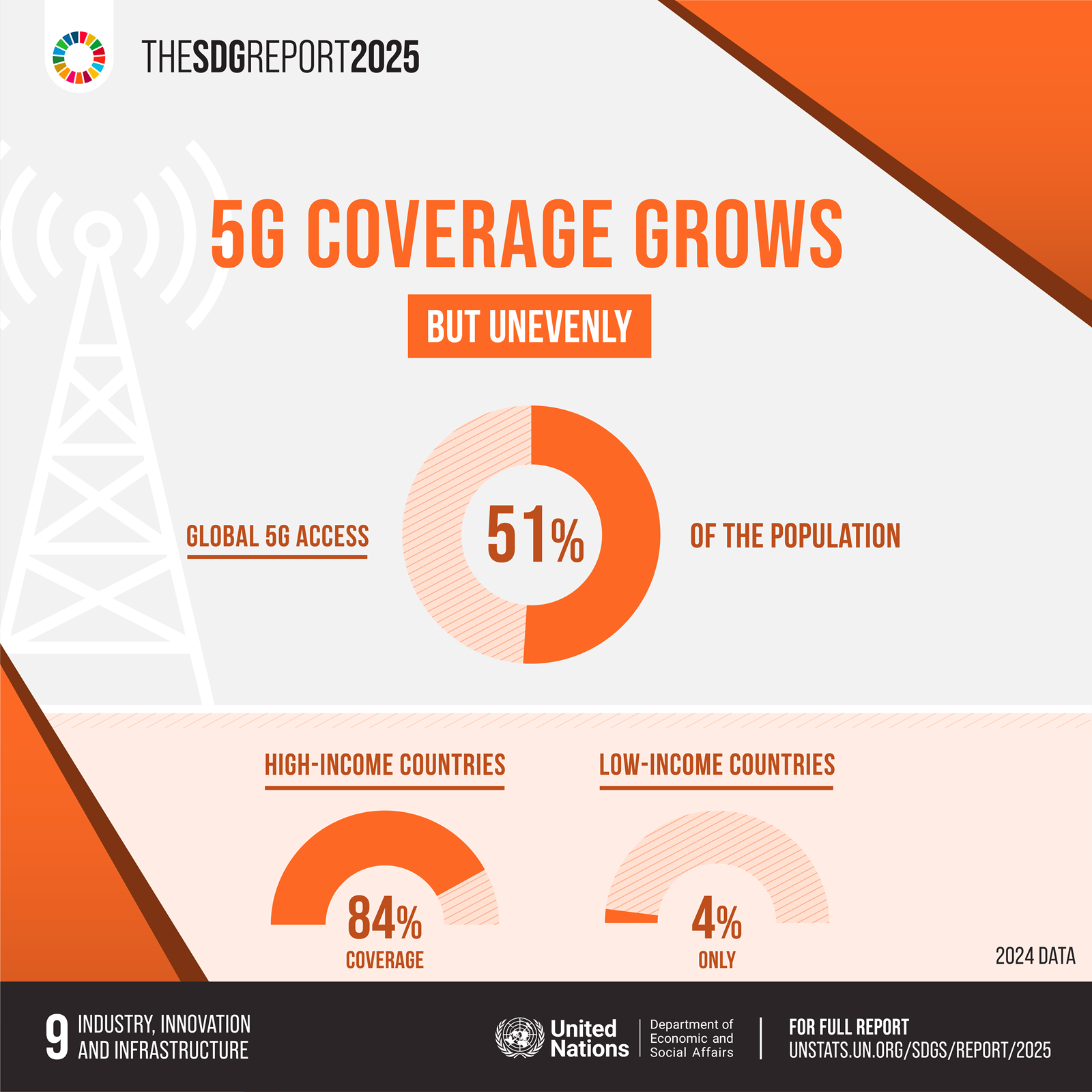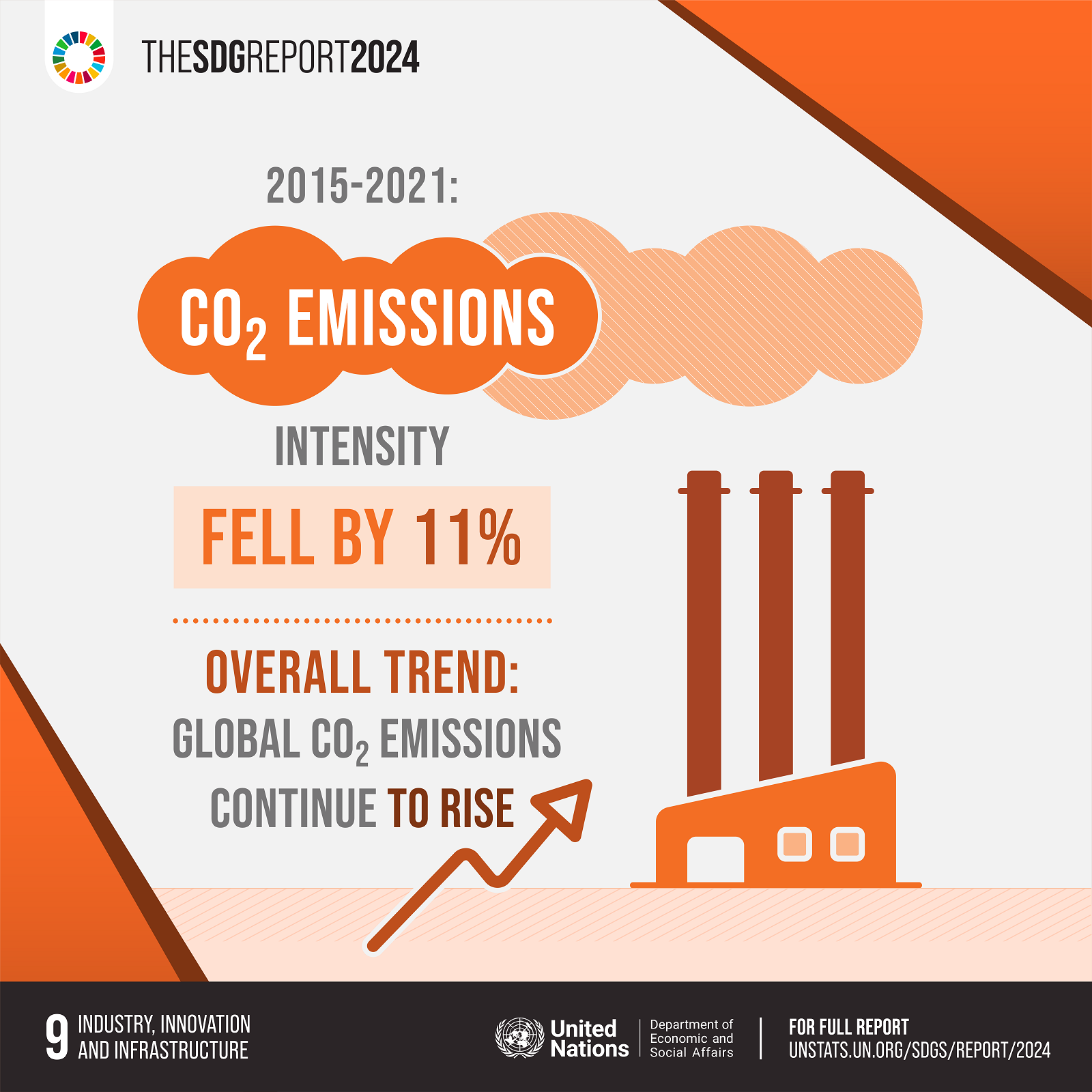
Sustainable transport
Targets and Indicators

9.1
Develop quality, reliable, sustainable and resilient infrastructure, including regional and transborder infrastructure, to support economic development and human well-being, with a focus on affordable and equitable access for all
9.1.1
Proportion of the rural population who live within 2 km of an all-season road
9.1.2
Passenger and freight volumes, by mode of transport

9.2
Promote inclusive and sustainable industrialization and, by 2030, significantly raise industry’s share of employment and gross domestic product, in line with national circumstances, and double its share in least developed countries
9.2.1
Manufacturing value added as a proportion of GDP and per capita
9.2.2
Manufacturing employment as a proportion of total employment

9.3
Increase the access of small-scale industrial and other enterprises, in particular in developing countries, to financial services, including affordable credit, and their integration into value chains and markets
9.3.1
Proportion of small-scale industries in total industry value added, based on (a) international classification and (b) national classifications
9.3.2
Proportion of small-scale industries with a loan or line of credit

9.4
By 2030, upgrade infrastructure and retrofit industries to make them sustainable, with increased resource-use efficiency and greater adoption of clean and environmentally sound technologies and industrial processes, with all countries taking action in accordance with their respective capabilities
9.4.1
CO2 emission per unit of value added

9.5
Enhance scientific research, upgrade the technological capabilities of industrial sectors in all countries, in particular developing countries, including, by 2030, encouraging innovation and substantially increasing the number of research and development workers per 1 million people and public and private research and development spending
9.5.1
Research and development expenditure as a proportion of GDP
9.5.2
Researchers (in full-time equivalent) per million inhabitants

9.a
Facilitate sustainable and resilient infrastructure development in developing countries through enhanced financial, technological and technical support to African countries, least developed countries, landlocked developing countries and small island developing States
9.a.1
Total official international support (official development assistance plus other official flows) to infrastructure

9.b
Support domestic technology development, research and innovation in developing countries, including by ensuring a conducive policy environment for, inter alia, industrial diversification and value addition to commodities
9.b.1
Proportion of medium and high-tech industry value added in total value added

9.c
Significantly increase access to information and communications technology and strive to provide universal and affordable access to the Internet in least developed countries by 2020
9.c.1
Proportion of population covered by a mobile network, by technology
Progress and Info
Since 2015, notable progress has been made in expanding infrastructure, fostering industrial growth and boosting innovation. However, stark regional disparities persist, and many developing countries continue to face systemic barriers to inclusive and sustainable industrialization. To advance Goal 9, countries must boost investment in resilient infrastructure and research and development, expand access to finance for small manufacturers and bridge the digital divide by prioritizing affordable broadband and innovation systems in the world’s most underserved regions. The United Nations is advancing digital inclusion through initiatives such as the Technology Bank for the Least Developed Countries and the Global Digital Compact, which is aimed at closing connectivity gaps, expanding access to innovation and ensuring digital transformation benefits
Target 9.1 - From 2015 to 2023, global maritime freight volumes in terms of goods loaded grew from 10.3 to 11.6 billion tons, with developing countries’ share increasing from 49 to 54 per cent. Asia, led by China, drove this expansion, while small island developing States and landlocked developing countries remained marginalized owing to infrastructure and cost barriers.
Target 9.2 - Global manufacturing annual growth rebounded sharply by 9.2 per cent in 2021, stabilized at 2.2 per cent in 2022, then lowered to 1.7 per cent in 2023 owing to geopolitical and economic volatility. In 2024, growth rose to 2.7 per cent, Global manufacturing value added per capita increased by 17.3 per cent, from $1,649 in 2015 to $1,934 in 2024. 86. The global manufacturing employment share held steady at 14.3 per cent from 2015 until 2020, dipping to 14.1 per cent in 2023, owing to pandemic disruptions, geopolitical tensions and sanctions.
Target 9.3 - Worldwide, 31 per cent of small manufacturing enterprises have a loan or credit line, based on available data, but only 18 per cent in sub-Saharan Africa.
Target 9.4 - In 2024, global CO2 emissions from fuel combustion and industrial processes reached a record 37.6 gigatons, a 0.8 per cent increase from 2023. Rising natural gas and coal consumption drove emissions, while record temperatures increased electricity demand for cooling. However, the expansion of clean energy technologies such as solar, wind and nuclear power mitigated what could have been a threefold larger emissions increase.
Target 9.5 - Global research and development spending grew at 5.1 per cent annually from 2015 to 2022. The research and development share of global GDP rose from 1.72 to 1.95 per cent in 2022. However, many developing economies saw declines in research and development investment as a proportion of GDP. 90. From 2015 to 2022, the global number of researchers grew by 4.3 per cent annually, driven by Eastern and South-Eastern Asia. This is reflected in an increase in the number of researchers per million inhabitants from 1,137 to 1,420 globally over that period. Women made up 31.1 per cent of the research workforce.
Target 9.b - Since 2015, the share of medium- and high-tech manufacturing value added has risen modestly, to 44.47 per cent in 2022. Regional disparities persist, with high -tech manufacturing accounting for 48.57 per cent in Europe and North America, but only 16.40 per cent in sub-Saharan Africa.
Target 9.c - In 2024, 5G covered 51 per cent of the global population, with high-income countries at 84 per cent and low-income at 4 per cent. 4G reached 92 per cent worldwide. However, 15 per cent of people in the least developed countries and 14 per cent in landlocked developing countries lack mobile broadband.

For more information, please visit: https://unstats.un.org/sdgs/report/2025/
More details on SDG 9 in 2025: https://unstats.un.org/sdgs/report/2025/Goal-09/
The 2025 Extended Report on SDG 9 can be found here: https://unstats.un.org/sdgs/report/2025/extended-report/Extended-Report-2025_Goal-9.pdf










